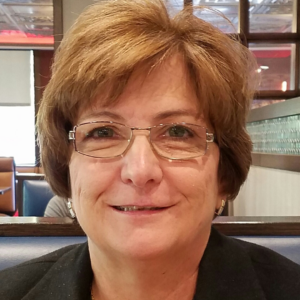Hurricane Sandy: A lesson in survival
Oct. 22, 2012, a major storm formed in the western Caribbean and traveled up the East Coast. “Hurricane Sandy” rapidly became the largest Atlantic hurricane on record. As the storm left North America, a state of emergency was declared in seven states. Emergency operation centers, essential assets, communication and transportation centers were placed on alert. Mandatory evacuations for high-risk areas were ordered. Army and Air National Guard troops reported to state armories.
A few days later, on Oct. 28, President Barack Obama declared a state of emergency in Connecticut, the District of Columbia, Delaware, Maryland, Massachusetts, New York and Rhode Island, placing federal assets on available status.
Federal assistance
The Federal Disaster Medical Assistance Team (DMAT) is comprised of professional and paraprofessional medical personnel (supported by a cadre of logistical and administrative staff) designed to provide medical care during a disaster or other event. It operates under and drills using the National Incident Command System (NIM), which is the foundation of the National Preparedness Systems. This system allows government, non-government and private assets to work together seamlessly to manage incidents involving all threats and hazards.
DMATs are designed to be a rapid-response element, supplementing local medical care until other federal or contract resources can be mobilized, or the situation is resolved. DMATs deploy to disaster sites with sufficient supplies and equipment to sustain themselves for 72 hours while providing medical care at a fixed or temporary medical care site. The personnel are activated for a period of two weeks.
DMAT teams were placed on alert Oct. 28, 2012. Oct. 30, Connecticut’s DMAT team (CT-1) was deployed to Lehman College (City University of New York. The U.S. Department of Health and Human Services’ office of the assistant secretary for preparedness and response pre-positioned DMATs and other federal medical and public health resources even before individual team missions were defined so they could be quickly deployed. To prepare, CT-1 DMAT assembled its assets including an acute care tent and base of operation.
Nursing home evacuation
By the end of deployment Day 1 (Oct 31) the members of CT-1 were tasked with providing housing and medical care for nursing home evacuees from an extended care facility in Rockaway Park, Queens, N.Y. A section of the boardwalk was thrown against the building blowing out its windows and flooding the first few floors. The facility’s generator went out. It was located on the ground floor, which quickly filled with the rushing waters of the Atlantic.
After two days of sheltering in place in the dark and without food, the facility’s management decided to evacuate its nearly 200 residents. Ambulances arrived and for several hours residentss were evacuated to various emergency shelters within the city.
Twenty-eight of these residents arrived at our sit—the Lehman shelter—with limited medical orders or medication information, which presented a significant challenge. Residents arrived with a variety of information. Some had single-sheet emergency records; some had blister-pack medications and some residents had no information at all. In a few cases, staff from the facility was available to fill in some of the blanks.
Histories were obtained by reviewing the residents’ medications. The U.S. Public Health Service Commissioned Corps mental health team evaluated residents with cognitive or psychiatric disorders. Eventually, the administrators were allowed back into the nursing home, and were able to provide pertinent medical information.
Life at an evacuation site
Initially, residents were placed in a large gymnasium in the university’s health complex. Knowing that other general population evacuees were slated to arrive in the same accommodations, local authorities decided to move this vulnerable population to two adjoining dance studios for safety and containment concerns. One space was made into a sleeping area and the other was the dining room/entertainment/exercise area. The sleeping area used a portable room divider for gender separation. The separate sleeping and dining areas provided a minimum level of needed exercise space; when patients were in the larger gym facility, it became clear that they ate, slept and socialized on their cots.
Multiagency law enforcement resources provided operational security. Personnel from federal, state and local police agencies worked together to maintain a safe environment for staff and evacuees.
Other challenges
Caring for geriatric populations raise two major considerations, care for incontinence and maintenance of skin integrity. DMATs travel with a large cache of supplies, medications and equipment, which includes adult diapers, incontinence pads and protective barrier ointments. The residents slept on standard Army-issue cots with egg crate mattresses. A local hospital provided inflatable pressure-relief mattresses. Any additional supplies were provided by a variety of sources and vendors.
When a supply request was made, it was the responsibility of the logistics division to locate and provide it. We had a clean supply of linen available. There was no service, however, to remove soiled linen. In a less than ideal situation, the improvised solution was to bag the soiled linen and place it in an unused stairwell. Eventually an outside laundry service agreed to launder the patients’ personal items, which were the only belongings this displaced population possessed.
Showering and toileting residents presented other problems. Bathrooms were located a distance away from their accommodations (the dance studios) and not dedicated to our residents. Escorts were required to accompany residents to and from the bathroom for safety and supervision. Volunteers from the community were recruited to provide escort service. Once the volunteers were identified, they were prescreened and background checked by the incident command. On approval, escorts were available throughout the day and night to meet the continual toileting needs of our residents.
Many of these elderly residents who were uprooted from their normal surroundings, suffered from early dementia or confusion in a new environment. It was quickly determined that a structured schedule decreased confusion and identified and addressed numerous concerns/issues.
Another challenge we faced for this vulnerable population was the implications of healthy dietary options. Standard shelter fare is a 3,000 calorie, ready-to-eat meal, which was not appropriate for this cohort. To assist with proper nutrition needs, the chef and his staff at Lehman College volunteered to stay and provide three meals a day for all our evacuees and team members and were able to accommodate special dietary requirements.
A typical day started with waking residents, assisting them with basic activities of daily living and escorting them to the bathroom. Ambulating patients to the dining rooms and bathroom facilities provided the necessary exercise to decrease risks associated with immobility.
Breakfast provided an opportunity to change linens and have housekeeping clean the sleeping quarters. The dining area also provided needed social interaction and time away from their individual cots. Residents were encouraged to participate in social activities such as exercise, board games and movies. Singers, athletes and a magician volunteered their time to boost morale.
Lessons learned
As a DMAT member one never knows the details of his or her deployment. Collaboration, strong assessment skills, communication and continuous problem-solving are vital to the mission’s success. While every “disaster” or incident is unique and has its own set of problems and issues, working within the framework of NIMS and deploying resources early is the key to success. Hospital Incident Command Systems and Municipal Incident Command Systems are designed to dovetail into NIMS’ structure.
As with any catastrophic event, There are lessons to be learned. In light of the Hurricane Sandy response, several recommendations are in progress. One change is that all long-term care facilities and supportive housing programs will be required to have formal disaster plans and mutual aid agreements for evacuated residents.
Facilities must have up-to-date medical information which can easily be transported with evacuees. Special populations with decreased mobility must be considered early in the evacuation process. Lastly, shelters caring for the medically needy must be provided additional resources above and beyond those of regular shelters.
Thomas A. Farley MD, MPH, commissioner of the New York City Department of Public Health and Hygiene, said in his after action testimony: “…while there was tragic loss of life from Hurricane Sandy, due to the heroic efforts of many people, no one lost their lives in healthcare facilities because of the storm.”
Brenda Stratton, RN, MSN, has been an emergency/critical care nurse for more than 30 years and a member of CT-1 DMAT for 10 years. She is currently employed in emergency Mmanagement at the University of Connecticut Health Center. Reach her at bstratton@uchc.edu.
I Advance Senior Care is the industry-leading source for practical, in-depth, business-building, and resident care information for owners, executives, administrators, and directors of nursing at assisted living communities, skilled nursing facilities, post-acute facilities, and continuing care retirement communities. The I Advance Senior Care editorial team and industry experts provide market analysis, strategic direction, policy commentary, clinical best-practices, business management, and technology breakthroughs.
I Advance Senior Care is part of the Institute for the Advancement of Senior Care and published by Plain-English Health Care.
Related Articles
Topics: Activities , Alzheimer's/Dementia , Articles , Clinical , Disaster Preparedness , Leadership , Risk Management











